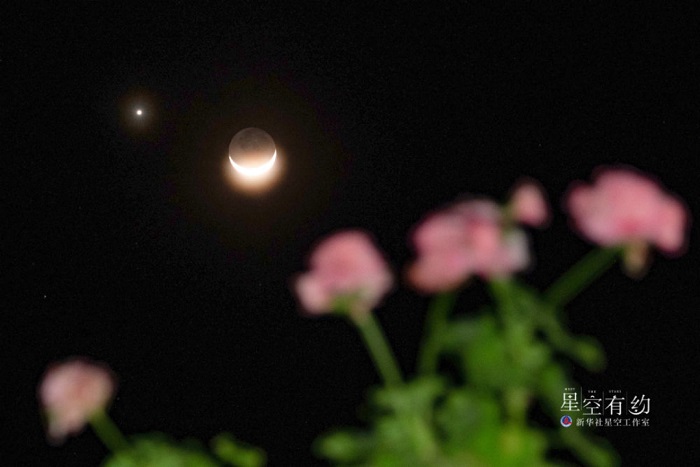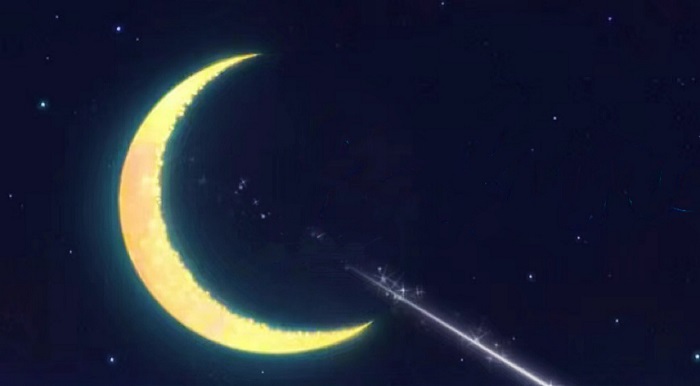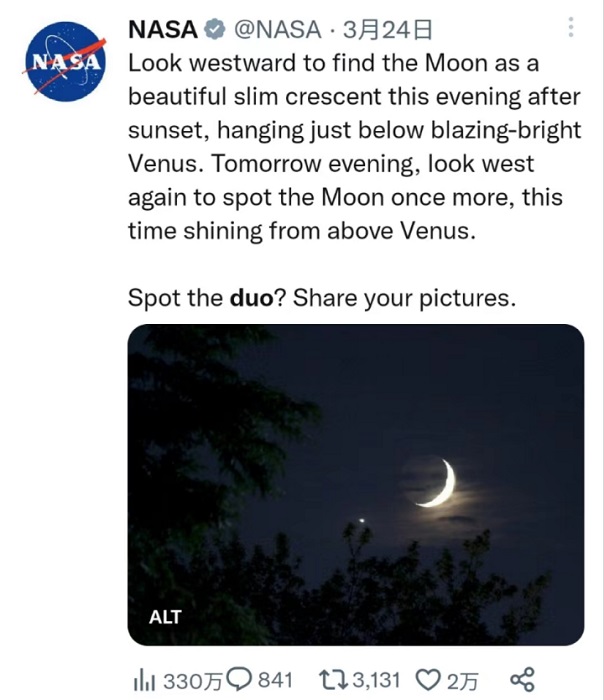
"Venus accompanies the Moon" will soon be romantically staged. How did "Venus and the Moon" come together?
2023-05-23 08:59
Have you heard of "Venus accompanying the Moon"? According to astronomy experts, on the evening of May 23rd, the two brightest celestial bodies in the night sky, the Moon and Venus, will "meet" in the western sky, putting on a romantic "moon and star fairy tale".

New moons occur when the moon is directly between Earth and the sun. The two bodies share their celestial longitude, a projection of Earth's longitude lines on the sky, a position also known as a conjunction. Since they are in the daytime, and the sun is so bright, it's not possible to see a new moon unless there is a solar eclipse.

A conjunction is an astronomical phenomenon occurring when two celestial objects share the same right ascension or ecliptic longitude in the sky. Once every 27.3 days, the moon passes through a narrow part of the sky centered on the ecliptic and encounters planets, according to starwalk.space.

The Venus accompanying the Moon tweet released by NASA on March 24th.
A wide variety of different conjunctions and configurations involving bright stars and planets typically occur during the course of any given year. From our Earthly vantage point, we can readily observe Mercury, Venus, Mars, Jupiter and Saturn with our unaided eyes as they revolve around the sun. Each of these planets appears to move against the starry background at their own speeds and along their own tracks. It is obvious that since they are constantly moving at different speeds, the positions of all five planets at any particular time are unique to that particular moment.
Tonight, call your best friends and go see "Venus accompanying the Moon" together!
Editor: Shang Zheng
Intern: Liu Zihan
Source: Xinhua News Agency,CGTN, Space.com, Star-News








